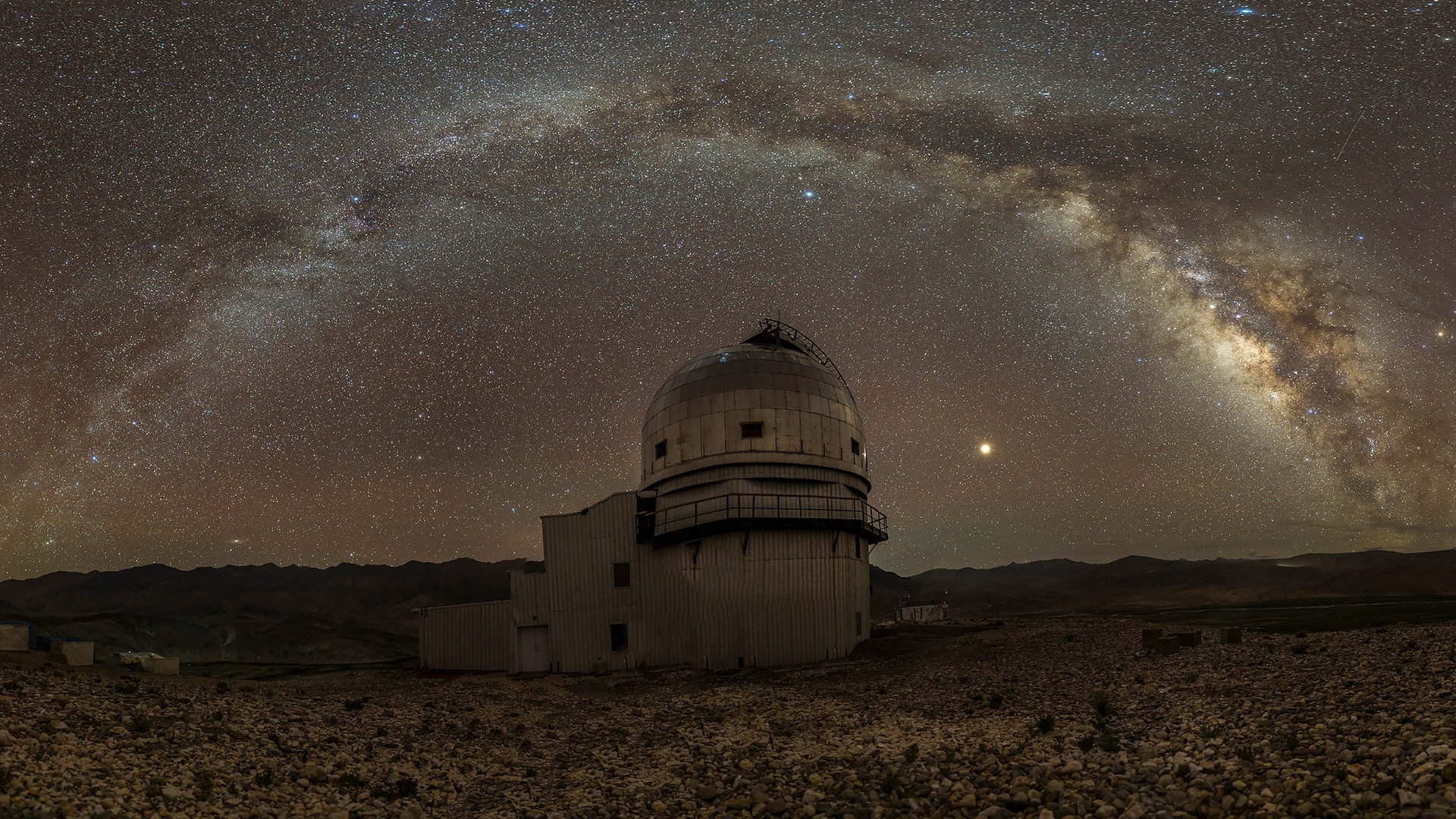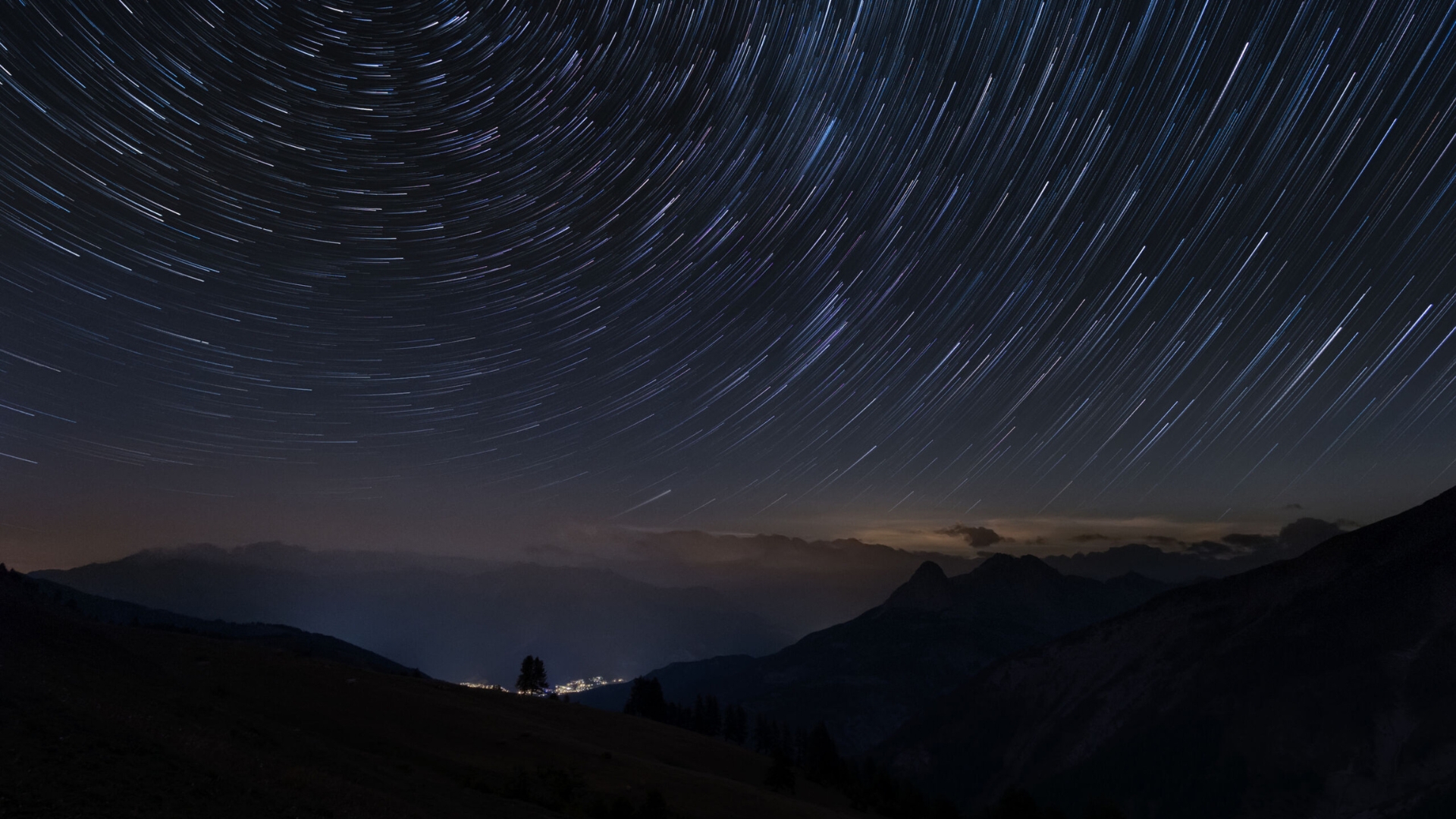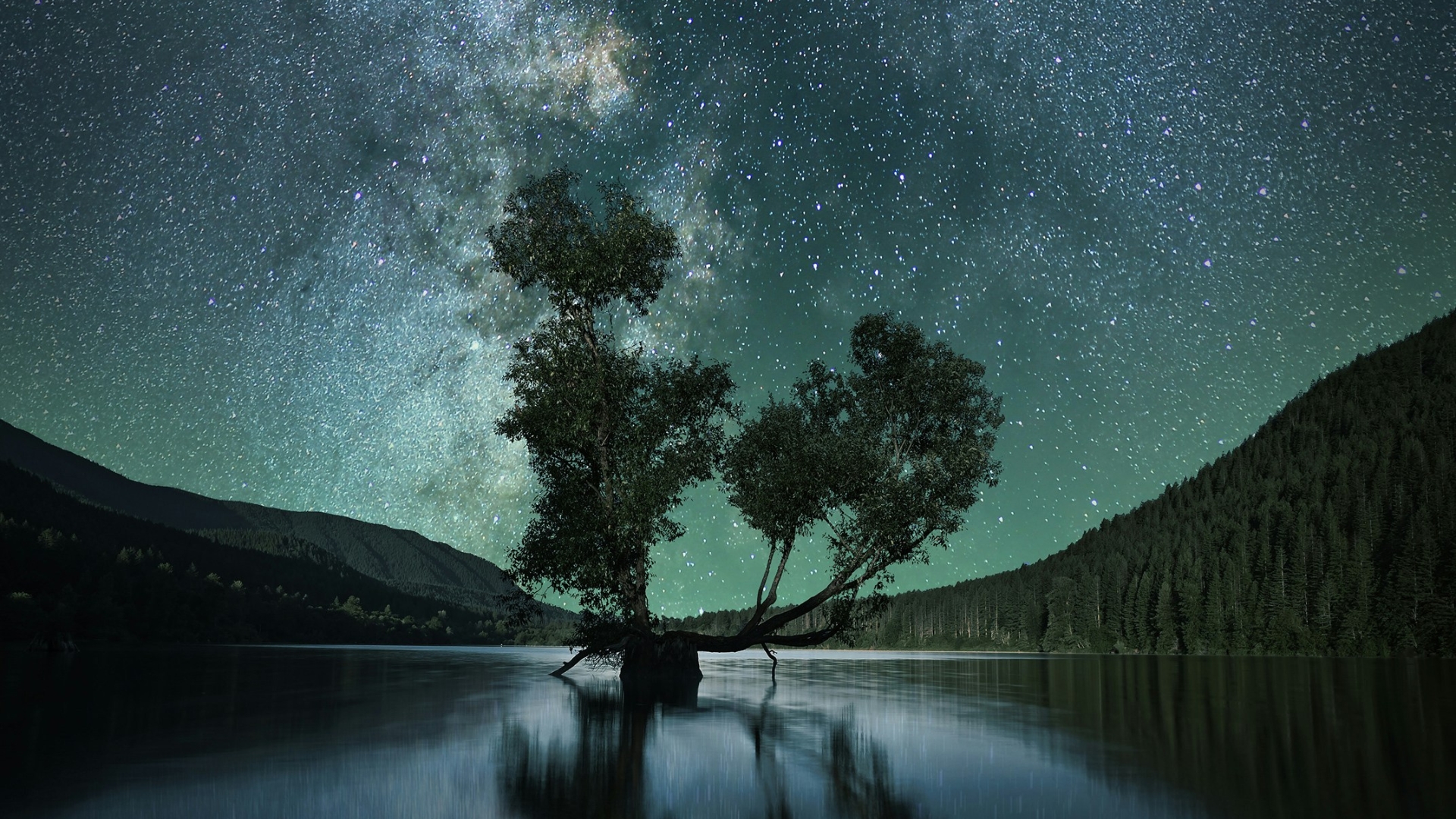Astro Tourism: Dark Matters
With increasing light pollution, dark sky reserves are sanctuaries protecting the night skies in their pristine form. The good news—there are an increasing number of sanctuaries as more regions vie for the ‘dark sky’ status, even in India. They offer an incredible opportunity for the country’s travel industry to diversify into new segments and are in keeping with the world’s sustainable travel goals.
By Suman Tarafdar
Light years away
It was a ‘Star Party’ unlike any you might have been to. Yes, these were for the real stars, the ones that are light-years away and dot the night sky. India’s first dark sky reserve, Hanle Dark Sky Reserve, held this aforementioned Star Party, which brought together approximately 30 amateur astronomers from various parts of India to observe and photograph the pristine night sky, far away from the disruptions of light pollution, just about a year ago.
The Hanle Dark Sky Reserve (HDSR) is India's first dark sky reserve, located in the Changthang Wildlife Reserve in Ladakh. Meanwhile, the Pench Tiger Reserve in Maharashtra was designated as India's first Dark Sky Park earlier this year.
More places have applied for this recognition, leading to the expectation that astro tourism will gain traction. Starscapes, India's leading astro tourism company, has collaborated with Magucho, an experiential travel platform founded by actor Gul Panag. Nakshatra Sabha, a collaboration between Starscapes and the Uttarakhand Tourism Board, held its initial event in October, and Magucho collaborated with them. According to Panag, “Our work with Starscapes helps us offer our community and users an opportunity to experience the magic of our universe. We are excited about hosting many more astronomy experiences for our customers.”
The Dark and Quiet Skies for Science and Society Working Group, led by the International Astronomical Union, has recommended the establishment of 'Dark Sky Oases' by national and local governments. According to Prabhu Nath Shukla, the deputy director of Pench Tiger Reserve, Dark Sky Place certification focuses on lighting policy, dark sky-friendly retrofits, outreach and education, and monitoring the night sky, helping promote the reserve as an ideal facility for astronomy enthusiasts.
Navigating the dark sky universe
Did you know that 80% of the world’s population lives under lightly polluted skies? While technology has made human life easier in many respects, there have been multiple disruptions too, including increasing pollution in different aspects of our existence. An oft-overlooked one is light pollution, which has seen our velvety dark skies disappear, especially in urban areas. Light pollution is now known to disrupt wildlife, impact human health, and even contribute to climate change, from an astronomical point of view, blocking our view of the universe. These skies have played an important role in human history, helping travellers crisscross the planet for millennia.
Less obvious, but perhaps just as important, is the role these skies have played in inspiring poetry across the ages. From Astronomia, a fragmentary ancient Greek hexameter poem that was astronomical in focus, to the quasi-spiritual poem The Light of Stars by Henry Wadsworth Longfellow, the night sky has held a powerful hold on humans, narrating their stories. Indeed, the English language has a special category for poems set at night—the nocturne.
This might seem to contradict most of the given understanding of what is ‘right’. Since times immemorial, ever since humans began formulating proto-religions, we as a species have been praying for the victory of the forces of ‘light over darkness’. Except, and perhaps in just as ancient a tradition, the night sky has been a sacrosanct ally, one that helped humans navigate the planet.
Excessive and improper lighting robs us of our night skies, disrupts our sleep patterns and endangers nocturnal habitats for all species. No surprise then that more and more regions around the world are prioritising saving or reclaiming the night sky—a rare instance where the superiority of darkness is upheld over ‘light’. In recent decades, many areas have been designated as ‘dark sky reserves’. The nomenclature differs: the International Dark-Sky Association (IDA) uses International Dark Sky Reserve (IDSR) and International Dark Sky Park (IDSP), while another designation, International Dark Sky Sanctuary, was introduced in 2015. The purpose of the dark-sky movement, however, is common—to promote astronomy.

The Dark and Quiet Skies for Science and Society Working Group, led by the International Astronomical Union, has recommended the establishment of 'Dark Sky Oases' by national and local governments.
The observatories and the reserves
IDA was founded in 1988 to reserve public or private land for an exquisite outlook of nocturnal territories and starry night skies. The Mont Mégantic Observatory in Quebec is the first such site to be recognised (in 2007) as an International Dark Sky Reserve. IDA recognised Natural Bridges National Monument in Utah as the world's first International Dark Sky Park. In 2015, the IDA introduced the term ‘Dark Sky Sanctuary’ and designated the Elqui Valley of northern Chile as the world’s first International Dark Sky Sanctuary.
A note of caution—while there is general agreement that a dark-sky reserve should be sufficiently dark to promote astronomy, there is still no international norm that defines the exact standards of what would constitute a dark sky. However, in better news for those in India, there are plans by the Indian Institute of Astrophysics (IIA) to make Hanle’s Star Party an annual event, attracting astronomers, professional or otherwise. Or anyone interested in gazing at the wonders of the universe as seen in an inky, dark sky.
The opportunities for India’s travel industry
Dark sky sanctuaries and astro-tourism present significant opportunities for India’s travel industry, combining unusual experiences with sustainability and scientific awareness. Among the potential benefits:
Niche Tourism Market Expansion: Astro-tourism caters to a growing audience seeking non-commercialised travel experiences, such as stargazing, astrophotography, and celestial events. These experiences attract eco-conscious, well-educated, and often high-spending travellers, both domestic and international.
Boost to Rural and Remote Economies: India's vast rural and high-altitude regions (e.g., Ladakh, Spiti Valley, Rann of Kutch) with low-light pollution are ideal for stargazing. Developing infrastructure in these areas can create jobs and support local economies. Partnerships with local communities can integrate cultural and natural heritage into astro-tourism packages, offering holistic experiences.
Diversification of India's Tourism Portfolio: Unlike seasonal attractions, dark sky tourism thrives year-round, particularly during new moon and celestial events, reducing seasonality challenges.
Alignment with Sustainability Goals: Dark sky sanctuaries emphasise the preservation of natural habitats and reduction of light pollution, aligning with sustainable tourism practices. Raising awareness about the importance of protecting dark skies can encourage broader conservation efforts.
Global Recognition: India can collaborate with international organisations like the International Dark-Sky Association to gain recognition for its sanctuaries, boosting visibility and credibility.
Marketing and Promotion Opportunities: India can position itself as a top astro-tourism destination, leveraging iconic celestial events like meteor showers or eclipses. Astro-tourism sites also offer rich opportunities for photography, social media, and storytelling, which can amplify destination marketing.
Synergies with Other Tourism Segments: It would be easy to combine astro-tourism with trekking or camping adventures, or link stargazing experiences with mythological and historical narratives about celestial bodies, tapping into India’s rich storytelling tradition.
There are, of course, several challenges to deal with before India truly becomes an astro-tourism destination. The urban sprawl near potential sanctuaries could limit visibility. Remote areas may require investments in transportation, accommodations, and visitor amenities. Educating local communities and stakeholders about the value and potential of astro-tourism will be needed.
And yet there is no denying that astro-tourism represents a forward-thinking approach to diversifying and enriching India’s travel offerings, appealing to both adventure seekers and those seeking introspective, immersive experiences under the stars.

The night sky has held a powerful hold on humans narrating their stories.
Hanle, India’s first dark sky reserve
At Hanle, the overwhelming sense is of wonderment at the sight of the Milky Way, majestic and clearly visible as it sprawls across a diamond-lit night sky.
About 1,073 km. around Hanle, a small village in the Changthang Wildlife Sanctuary, has been notified as the Hanle Dark Sky Reserve (HDSR). The Indian Institute of Astrophysics (IIA) already has an observatory in the region due to its arid, cold climate. Despite the temperature falling to below 20 in winter, there is barely any snow. Moisture in the form of snow absorbs light, but the dry conditions at Hanle ensure clear visibility.
Reaching this remote hamlet at a height of 4,500 m. or 14,700ft. Above mean sea level is no easy task. There are several light-related restrictions in the region. No artificial illumination, including vehicle lights, is allowed inside the reserve area. There are rules about indoor lighting, and curtains are a must for doors and windows. It helps that a few small hamlets apart, there are hardly human habitations in the area.
The HDSR is now accessible to travellers, including non-Indian tourists who were not allowed in the area earlier, throughout the year. March to October is the best time to travel; in winter, the region is often inaccessible and difficult to navigate. Local villages provide accommodation, while events such as the Star Party offer educational earning opportunities for local ‘astronomy ambassadors’ who have been trained by IIA to guide astro-tourists. Astro tourism also brings resources to an otherwise remote and connectivity-scarce region.

At Hanle, the overwhelming sense is of wonderment at the sight of the Milky Way—majestic and clearly visible as it sprawls across a diamond-lit night sky.
Where the stars shine the brightest
Astro-tourism as a travel concept has gained currency as people worldwide try and connect with nature in its most primal forms. A slew of Dark Sky Reserves offer unusual experiences that define luxury travel. Our guide to global dark sky reserves sets you on a tour of natural nightscapes that stargazers seek out.
SNOWDONIA NATIONAL PARK, UK
Snowdonia National Park, located in northwestern Wales, is a 2,130sq.km. park known for heavily faulted and folded succession of sedimentary and igneous rocks, resulting in a distinctive rocky landscape. The Snowdon Massif is a unique landscape and offers unhindered views of the night sky. These landscapes see little-to-no-light pollution allowing for exceptional dark skies.

The Snowdonia National Park in UK.
EXMOOR NATIONAL PARK, UK
Exmoor National Park in southwestern England includes the Brendon Hills, East Lyn Valley, the Vale of Porlock and adjacent coasts in Somerset and Devon. Spread over 692.8sq.kms., it is an upland region that was once a royal forest and hunting ground, with a low human population due to its unusual terrain, a combination that’s perfect for stargazing. Exmoor was designated as an International Dark Sky Reserve in 2011, making it Europe’s first dark sky reserve.

The Exmoor National Park in UK.
RIVER MURRAY, AUSTRALIA
The Murray River Reserve in South Australia, covering more than 3,200sq.kms., was originally designed to protect the endangered southern hairy-nosed wombat. Very soon, the region was recognised for its amazing dark skies and became popular with astronomers. Also Australia’s first Dark Sky Reserve, the area has a dry climate and cloudless skies.

The Murray River Reserve in South Australia.
NAMIBRAND NATURE RESERVE, NAMIBIA
The NamibRand Nature Reserve, located in southern Namibia, is a private nature reserve that aims to protect and conserve the native ecology and wildlife of the southwest Namib Desert. The Reserve has been designated a Gold Tier International Dark Sky Reserve, the second region globally to be so designated due to its exceptionally dark skies. The Gold Tier marks the darkest and the strictest category of dark skies. The Reserve was also the first International Dark Sky Reserve in the developing world and in Africa.

The NamibRand Nature Reserve, located in southern Namibia.
CÉVENNES NATIONAL PARK, FRANCE
Located in the south of Massif Central, Cévennes National Park is spread over 937sq.kms. of rugged mountains and plateaus. This UNESCO World Biosphere Reserve is home to a rich and diverse range of flora and fauna, and clear night skies. The largest of Dark Sky Reserves in Europe, summers here are especially popular as an aromatic scent wafts in the air due to flowering heather, adding to the romance of the wildlife, all under bright starry skies.

The Cévennes National Park located in the south of Massif Central.
CRANBORNE CHASE, UK
Part of Cranborne Chase and West Wiltshire Downs Area of Outstanding Natural Beauty (AONB), this area of southern England is quite close to the historic Stonehenge monument. A chalk downland plateau, bounded by escarpments, its undulating topography is at once scenic and wild, and was a popular hunting zone in the medieval period. Cranborne Chase became the 14th Reserve globally in October 2019. Weather permitting, it is possible to even view the Andromeda galaxy!

Part of Cranborne Chase and West Wiltshire Downs in UK.
GREATER BIG BEND INTERNATIONAL DARK SKY RESERVE, U.S./MEXICO
This is the world's largest Reserve and Protected Dark Sky Place according to IDA. It is spread over 9 million acres, from Fort Davis, Texas, to the Rio Grande River at the US/Mexico border, and adjoining protected areas in Mexico. Measurements indicate that the Big Bend region offers the darkest measured skies in the mainland US. The protected landscape encompasses a vast area of the Chihuahuan Desert, characterised by diverse desert habitat and wildlife, and complex geology. Incidentally, the McDonald Observatory is at the centre of this Reserve. Parts of this region are at the very top level of the Bortle Dark Sky Scale.

The Greater Big Bend International Dark Sky Reserve in US/Mexico Border.
MONT-MÉGANTIC RESERVE, CANADA
Mont-Mégantic, the world’s first International Dark Sky Reserve, is located in Québec. Designed as such in 2007, the reserve includes Mont Mégantic, a monadnock that is the centre of the Mont-Mégantic National Park. Located at its peak is the Mont Mégantic Observatory, a significant astronomical observatory. Not only does it offer spectacular night sky views, including the Northern Lights, but it has also served as an example of an inhabited area, reducing its outdoor light emissions by 25%.

Mont-Mégantic, the world’s first International Dark Sky Reserve located in Québec.
BRECON BEACONS NATIONAL PARK, UK
Located in the interiors of south Wales, Brecon Beacons National Park is a region full of mountains, hills and valleys of stunning beauty. In 2012, it became just the fifth destination in the world (and the first in Wales) to be accredited as an International Dark Sky Reserve. The park is said to have some of the highest quality dark skies in the UK, making it a suitable destination for stargazers to come and stay. On a clear night in the Brecon Beacons, it is possible to see the Milky Way, major constellations, bright nebulas and even meteor showers.

The Brecon Beacons National Park in UK.
ALPES AZUR MERCANTOUR, FRANCE
One of the oldest sites of astronomical significance, Mercantour National Park is known as a ‘land of exceptional astronomy', acknowledged since the end of the 19th century’. In 2019, it joined the exclusive list of 15 International Dark Sky Reserves in the world. The area, situated in the scenic Alpine regions, offers multiple places to gaze undisturbed at the splendours of the night sky. The favoured amongst these are the Calern plateau, Mount Mounier, the Bonette-Restefond Pass and Moutière Valley. Popular activities span night hiking with a mountain guide, snowshoe walking in winter or simply gazing at the twinkling night sky.

The Mercantour National Park in France.
NIUE, SOUTH PACIFIC
The island of Niue in the South Pacific is the only self-governing territory to be declared a Dark Sky Sanctuary. Niue’s road to becoming an IDA Sanctuary took the efforts of the entire population stretching to only 1,600 people. Niue Tourism proposed the idea and received the support of the country’s government and community. Per the news release, “Some of the significant measures undertaken by the government include full streetlight replacement for the entire island and the upgrading of domestic private lighting.” For Niue, being known as a Dark Sky Sanctuary is integral to preserving its culture. The cosmos, lunar cycles, and star positions are at the core of the Niuean culture.

The island of Niue in South Pacific.


























